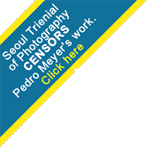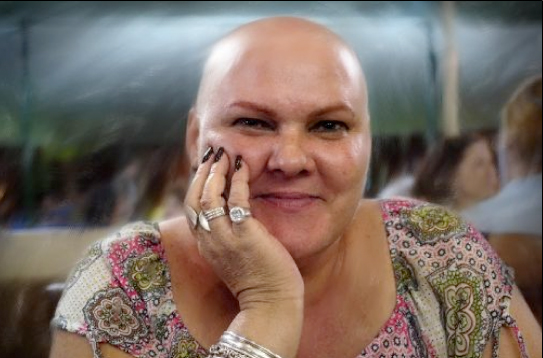| The camera's brushes |
 |
| Written by Pedro Meyer |
|
So where do we go from here? The decisive moment had been explored through an infinite variety of great images over the past decades. However, there came a point, that I was looking at images that looked like those of other great photographers where only the subject matter would be slightly different, from one author to the next. But what could follow after “great images” would be for me, the great unanswered question.
In art there has always been this search for new formal solutions to express the ever changing potential presented by and through new tools. So throughout the history of art, we have a panorama that has always been in the process of transformation. The present moment, being no exception.
With regard to photography, pictorialism was an important movement at the end of the nineteenth century up to the start of the twentieth.
* Robert Leggat, wrote in 1999, the following: “The modern usage of this term may give a misleading picture of the movement as it arose in the second half of the nineteenth century; in any case, like the all-embracing word "art" it is a most elusive, intangible, and highly subjective term. In modern parlance it is sometimes taken to suggest conservatism, and the unwillingness to explore new approaches. In its original meaning anything that put the finished picture first and the subject second was pictorialism. Given such a meaning, pictorialism by no means excluded more modern trends; any photograph that stressed atmosphere or viewpoint rather than the subject would come under this category.
By the second half of the nineteenth century the novelty of capturing images was beginning to wear off, and some people were now beginning to question whether the camera, as it was then being used, was in fact too accurate and too detailed in what it recorded. This, coupled with the fact that painting enjoyed a much higher status than this new mechanistic process, caused some photographers to adopt new techniques which, as they saw it, made photography more of an art form. These new techniques came also to be known as High-Art photography.
In effect, the term Pictorialism is used to describe photographs in which the actual scene depicted is of less importance than the artistic quality of the image. Pictorialists would be more concerned with the aesthetics and, sometimes, the emotional impact of the image, rather than what actually was in front of their camera.
Because pictorialism was seen as artistic photography, one would not be surprised that current styles of art would be reflected in their work; as impressionism was in vogue at the time, many photographs have more than a passing resemblance to paintings in this style. Examples of this approach include combination printing, the use of focus, the manipulation of the negative, and the use of techniques such as gum bichromate, which greatly lessened the detail and produced a more artistic image.”
If in fact conservatism would be the perception that would define pictorialism, because of it’s unwillingness to explore the new. One could say that today, the precise opposite has started to happen. Where the practitioners of the “straight picture” seems to be on the defensive and unwilling to explore the potential use of all the new digital tools at our disposal.
This arsenal of new options provided by the digital tools, open up vistas, that are very different in many ways to the historical notions of pictorialism.
Let me point some of these out, so that we can observe what is new and different. I would start out by the single most important aspect I have encountered in my personal explorations. The level of control, down to the last pixel to be found within the image. Such fine and precise slicing and dicing of the image, would be unimaginable in the past.
What this level of control provides us with, is the option to define and combine styles that would have eluded most practitioners of photography in the past. I am always hesitant to suggest that this has never been done before, because as soon as something like this is stated, someone will surely come up with an example by someone who in fact did something like that a hundred years ago.
The problem is not so much if something has never been done before, but if that something was produced in such a way, that the effort might be repeated in more than just an isolated instance. Photography became a world wide cultural phenomenon precisely because of it’s widespread adaptation, and ease of use is certainly at the center of such an experience.
So being able to combine within a single image, various styles, where the pictorial and the hyper real essence of straight photography, might be merged into a seamless presentation, is hinged directly to the possibility of control over every single pixel within the frame.
I am well aware that the defenders of the “straight image” would somehow like to retain the aura of veracity about the photograph, even though all the evidence from a factual point of view flies directly in opposition to such an argument. The photograph is merely a piece of evidence about something that took place in front of the camera, not a slice of reality as some would like to interpret.
As we are well aware, such evidence is very much a subjective representation, because that is all it can be. Even scientific pictures created by robots sitting on top of remote rovers on a distant planet need to be interpreted for their evidential representation. Who would believe if you had a little figure appear staring into the view finder of such a robot visiting a far of planet, that this was indeed proof of life there?
But getting back to life on this one, if Pictorialism was a photographic term used to describe images that emphasized the artistic quality of the photograph rather than the scene it depicted. The movement’s primary aim was to bring photography into the fine art realm. Also concerned with aesthetics and impact, Pictorialists sought to produce images that were not solely about the objects in front of the camera. Techniques used by these photographers to create a more painterly effect included combination printing, focus, and manipulation of the negative.
So then what is different this time around is the emphasis on representing the “photographic reality” of the scene depicted while incorporating at the same time the “artistic quality” of the painterly technique. I would imagine that combining elements of the pictorial with traces of photographic realism, might take us into a new territory worthy of exploration. Is this neo pictorialism, or is it neo realism? or something yet altogether different, either direction depends on the preference of what is emphasized within the image. Let us have your opinion, as the subject lends itself to a lot of very interesting debates.
Pedro Meyer
As always please joins us with your comments in our forums.
http://zonezero.com/editorial/noviembre05/november.html
|






